Something went wrong!
Hang in there while we get back on track
Best attractions in Turin
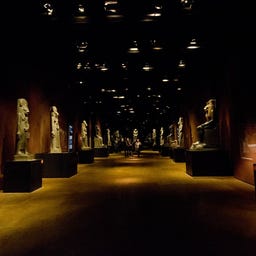
The Museo Egizio in Turin is one of the world's most important collections of Egyptian artifacts and the second-largest museum of its kind outside Egypt. With over 37,000 exhibits, including mummies, papyrus scrolls, and precious burial goods, it offers a fascinating journey through 4,000 years of history, art, and archaeology.
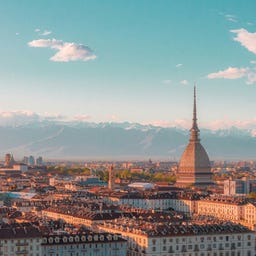
The Mole Antonelliana is undeniably Turin's most iconic landmark – a towering architectural masterpiece. Originally designed in 1863 by Alessandro Antonelli as a synagogue, it was later repurposed as a monument to Italian unity.
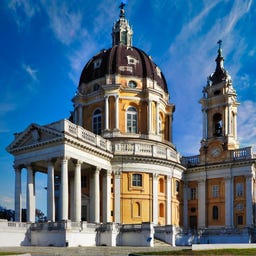
Majestically, the Basilica di Superga sits atop a 672-meter-high hill overlooking Turin, offering you a breathtaking view of the city and the Alps. This magnificent Baroque structure was commissioned by King Vittorio Amedeo II in gratitude for his victory over the French and was built between 1717 and 1731 according to the plans of architect Filippo Juvarra.

At the renowned Museo dell'Automobile di Torino, you can explore one of the most significant automobile collections in the world, which has documented the history of mobility since its founding in 1933. Spanning three floors and over 19,000 square meters, the fully modernized museum, reopened in 2011, showcases around 160 historical vehicles from 1769 to 1996. The building, designed by Amedeo Albertini, not only features the impressive main exhibition but also houses a restoration school and a section called "Garage" for exhibits not currently on display. Recognized by the prestigious Times newspaper in 2013 as one of the 50 best museums worldwide, MAUTO also offers visitors a virtual tour that you can explore from home.
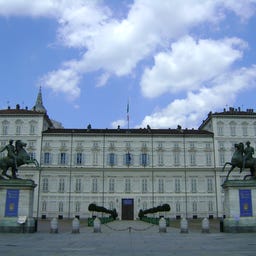
In the heart of Turin stands the Palazzo Reale, which was built in the late 16th century as a ducal residence and served as the political center of the Savoy dynasty for three centuries. This magnificent palace, now a UNESCO World Heritage site, houses the Royal Museums, including the Galleria Sabauda, the Armeria Reale, and the Museo di Antichità.
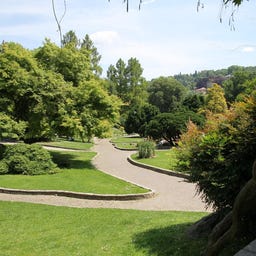
The Parco del Valentino is Turin's most popular city park, stretching over 42 hectares along the picturesque left bank of the Po River. At the heart of the park stands the Castello del Valentino, built between 1630 and 1660, which once served as a summer residence for the Savoy family.
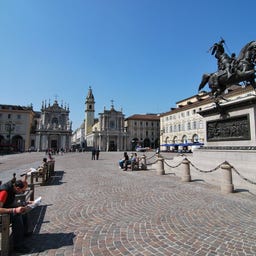
The elegant Piazza San Carlo is considered by the people of Turin as the "living room of the city" and connects Via Roma with Piazza Castello in the historic center. Originally established in the 17th century as a royal marketplace, the square is lined with magnificent Baroque facades and the two twin churches, Santa Cristina and San Carlo.
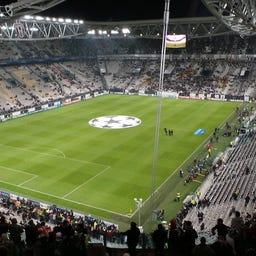
At the state-of-the-art Allianz Stadium, home of Juventus Turin, you experience Italian football in its most innovative form. Opened in 2011, the stadium was the first club-owned stadium in Italy and impresses with its distinctive architecture made of 7,000 aluminum panels and a floating roof.
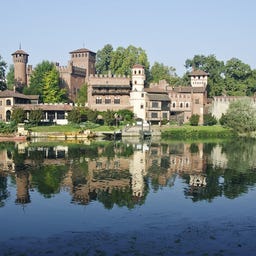
In the Parco del Valentino in Turin, you can explore the Borgo e Rocca Medievale, a detailed replica of a Piedmontese village complete with a 15th-century castle. This ensemble, built in 1884 under the direction of Alfredo d'Andrade, was originally created for an exhibition but was designed from the start to be a permanent attraction.
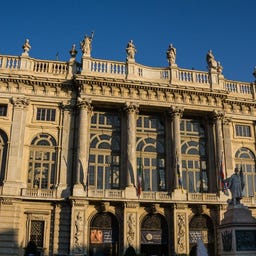
In the heart of Turin, you will find the fascinating Palazzo Madama, a building that encapsulates the city's 2000-year history—from a Roman fortress to a baroque city palace. The magnificent façade, designed by Filippo Juvarra between 1716 and 1718, harmoniously blends with the medieval elements of the original fortress built by the Savoia-Acaja family in the 14th century.
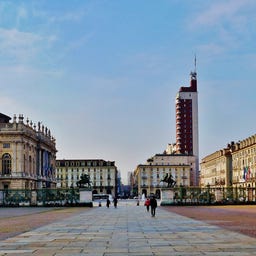
Piazza Castello is the vibrant heart of Turin, where the four main streets of the city intersect under elegant arcades. Here stands the impressive Palazzo Madama, built on the foundations of a Roman city gate from the 1st century, and the square took on its current form thanks to Ascanio Vittozzi in 1583.
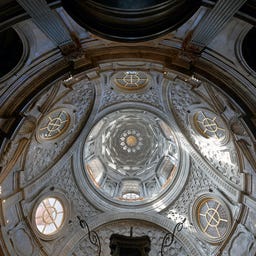
In the Cathedral of Turin, you will find one of the most fascinating examples of 17th-century Baroque architecture with the Chapel of the Holy Shroud. Commissioned by Duke Carlo Emanuele I and completed by Guarino Guarini, the chapel impresses with its visually complex dome made of six stacked arches and an intricate black-and-white marble floor.
The Mercato di Porta Palazzo is the largest open-air market in Europe and impossible to miss on Piazza della Repubblica. From Monday to Friday, it's open from 7:00 AM to 2:00 PM, and on Saturdays until 4:30 PM. You'll find a wide variety of Italian specialties here, and you can also sample street food in the covered market hall. Beyond food, the market offers everything from household goods and textiles to Moroccan lanterns and African masks.
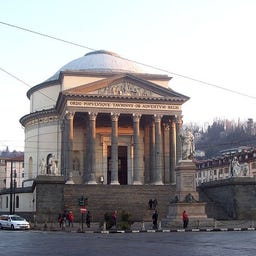
The majestic Chiesa della Gran Madre di Dio stands on the right bank of the Po River and offers one of the most famous views of Turin's historic center. Designed by Ferdinando Bonsignore after the model of the Roman Pantheon, the church was commissioned in 1818 by King Vittorio Emanuele I. as a thank you for his return after the Napoleonic occupation.
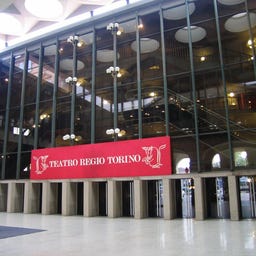
The Teatro Regio in Turin is one of the most important opera houses in Europe, impressing with its magnificent 18th-century Rococo facade, which is now a UNESCO World Heritage site. After its opening in 1740, the theater witnessed numerous historic moments, including the world premieres of Puccini's "La Bohème" and "Manon Lescaut," before being completely destroyed by a fire in 1936 and rebuilt in a modern style in 1973.
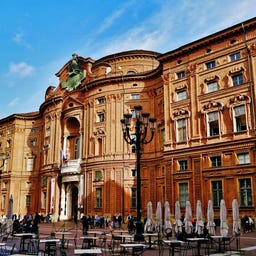
In the heart of Turin stands the Palazzo Carignano, an outstanding example of Piedmontese Baroque from the 17th century. Designed by Guarino Guarini, the palace features its distinctive C-shape and richly decorated facade, built between 1679 and 1685 for the Carignano family.
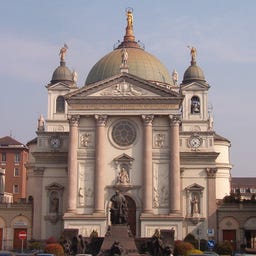
The impressive Basilica di Maria Ausiliatrice in the Turin district of Valdocco is not only an important Catholic sanctuary but also the final resting place of Saint Don Giovanni Bosco. The neoclassical building, inspired by the facade of the Basilica San Giorgio Maggiore in Venice, was inaugurated in 1868 and expanded in the 1930s.
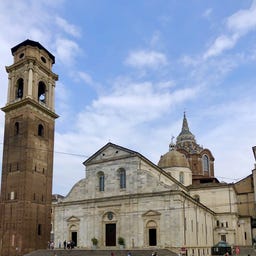
The Duomo di Torino, Turin's most important Catholic church and the only surviving sacred building from the Renaissance period, was built between 1491 and 1505 on the foundations of three early Christian predecessor churches. The white marble facade with its three portals and the bell tower, which was raised in the 18th century, still define the cathedral's appearance at Piazza San Giovanni.
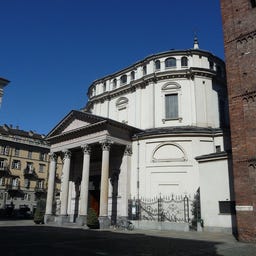
In the heart of Turin stands the Santuario della Consolata, the city's most significant Marian shrine, with a history dating back to the 5th century. The current Baroque structure, an architectural masterpiece by Guarino Guarini, Filippo Juvarra, and Carlo Ceppi, captivates with its unique layout featuring an elliptical body and a hexagonal nave.
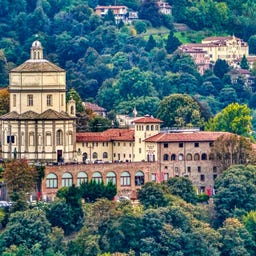
Majestically, the Chiesa di Santa Maria del Monte dei Cappuccini sits atop a hill overlooking Turin, offering you one of the most beautiful panoramic views of the city and the Alps. The church, which began construction in the 16th century and was completed in 1656, combines late Renaissance and Baroque elements and stands on historic ground, where a Roman temple dedicated to Jupiter existed as early as the 1st century BC. Inside, you can admire impressive frescoes by Isidoro Bianchi and a curious reminder of the Napoleonic Wars—a cannonball embedded in the church wall. In the south wing of the adjacent monastery, you will find the National Mountain Museum, and halfway up the hill, you can stop for a meal at a restaurant.

The Piazza Statuto is one of the most important squares in the western center of Turin, characterized by elegant colonnades and neoclassical buildings designed by Giuseppe Bollati. Since its creation in 1863, it has been the site of significant historical events, from the protests against the relocation of the capital in 1864 to the major workers' demonstrations of the 1960s.
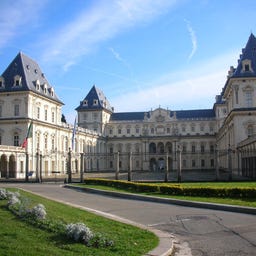
On the banks of the Po River stands the Castello del Valentino, an impressive Baroque castle from the 16th century that is now part of the UNESCO World Heritage. Originally built by the Birago family as a villa, the castle underwent its most magnificent transformation under Cristina di Borbone, who received it as a wedding gift and had it expanded in the French Baroque style.
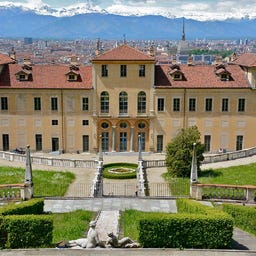
High above Turin stands the Villa della Regina, a magnificent 17th-century villa originally built for Cardinal Maurizio di Savoia. As part of the Residences of the House of Savoy, the villa was declared a UNESCO World Heritage Site in 1997 and now impresses visitors with its elaborate frescoes, four Chinese cabinets, and one of the most beautiful gardens in Italy, following extensive restoration.
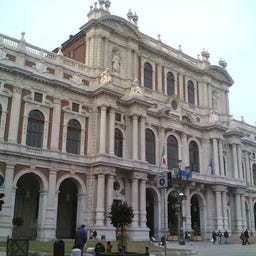
In the magnificent Palazzo Carignano, a Baroque building from the 17th century, you will find the oldest and most important museum dedicated to the Italian Risorgimento. Spanning 3,500 square meters and 30 rooms, the museum traces the history of Italy from the siege of Turin in 1706 to the end of World War I.
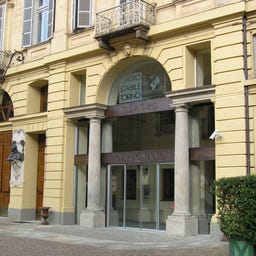
In the heart of historic Turin, you will find the Teatro Carignano, the oldest theater in the city, which has been continuously in operation since the early 18th century. This neoclassical building, with its bright facade, features an elegant auditorium with 875 seats and three tiers, crowned by an impressive ceiling fresco of the "Triumph of Bacchus" from 1845.
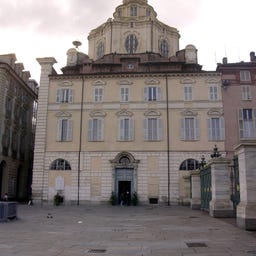
The Chiesa di San Lorenzo captivates with its unique dome featuring a star-shaped design and 16 overlapping ribs that rise 50 meters high. This sacred building, constructed between 1634 and 1680 under the significant guidance of architect Guarino Guarini, was commissioned by Duke Emanuele Filiberto I after his victory in the Battle of San Quintino.
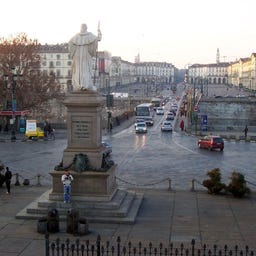
Piazza Vittorio Veneto is one of the most significant historical squares in Turin, impressing you with its elegant arcades and neoclassical buildings from the early 19th century. Originally designed as a military parade ground, the square was renamed in 1920 in honor of the decisive battle of World War I and has since become a vibrant center of urban life.
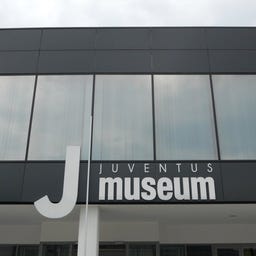
At the J-Museum in Turin, you can experience the fascinating history of the Juventus Football Club since its founding in 1897, all within one of the most modern sports exhibitions in the world. The bilingual multimedia exhibition, which opened in 2012, showcases over 400 historical objects, trophies, and memorabilia from this traditional club.
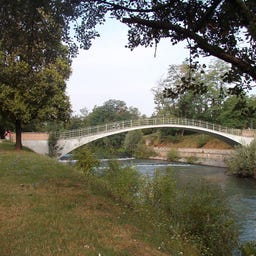
With 83.7 hectares, Parco della Pellerina is the largest city park in Turin and a popular recreational area for locals. The park, which began in the 1930s and was completed in the early 1980s, features two artificial lakes with waterfowl and a natural pond that formed after the flood in 2000.
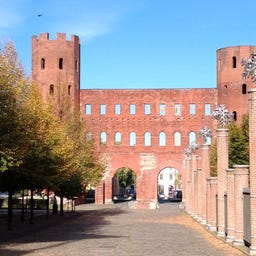
As the best-preserved Roman city gate from the 1st century BC, the Porta Palatina majestically stands with its towers over 30 meters high in the heart of Turin. This impressive structure has a rich history, having served as a medieval castle, a prison in the 18th century, and undergoing extensive restoration in the 1930s.
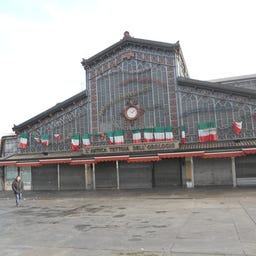
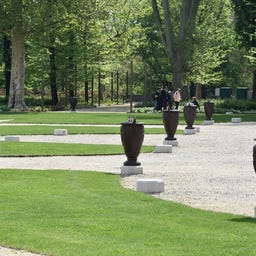

In the heart of Turin's historic center, you discover Piazza Solferino, named after the significant Battle of Solferino in the Italian War of Independence. Once used as a wood market, the square is now dominated by the impressive Fontana Angelica, featuring four sculptural groups that represent the seasons. At the center stands the magnificent equestrian statue of Ferdinando di Savoia-Genova from 1877, while the surrounding buildings in elegant Liberty style frame the square. After extensive renovations, the Piazza has been shining anew since 2013, complete with a modern sundial and restored historical monuments.
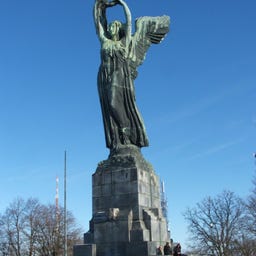
High above Turin stands the Faro della Vittoria, an impressive victory monument from the early 20th century that you can recognize from afar by its nighttime beacon. The 18.5-meter tall bronze statue was commissioned in 1928 by Giovanni Agnelli and created by sculptor Edoardo Rubino to commemorate Italy's victory in World War I.
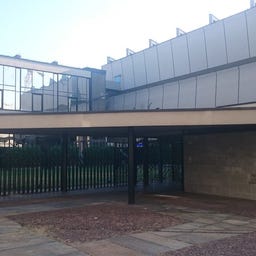
As the first municipal museum of modern art in Italy, GAM Torino now houses an impressive collection of over 47,000 artworks, including pieces by Antonio Canova, Pablo Picasso, and Andy Warhol. After being destroyed in World War II, the museum was reopened in 1959 in a modern building designed by architects Carlo Bassi and Goffredo Boschetti.
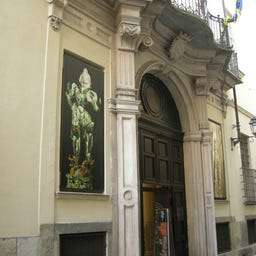
In the historic Palazzo Mazzonis in the center of Turin, you will find one of the most significant collections of Asian art in Italy. The museum, which opened in 2008, showcases around 1,500 selected exhibits from its collection of over 2,300 works, featuring impressive pieces from India, China, Japan, and the Islamic cultural sphere across five departments.
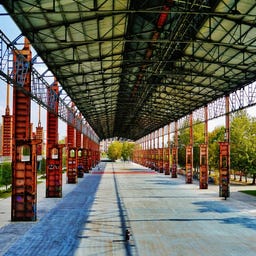
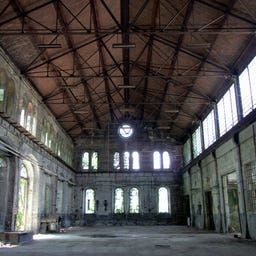
In the impressive halls of the Officine Grandi Riparazioni, where locomotives and railway cars were once maintained since the late 19th century, the cultural life of Turin now thrives. After its closure in the 1990s and the threat of demolition, the industrial complex was reopened in 2017 as a multidisciplinary cultural center.
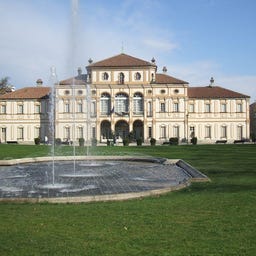
The magnificent Villa La Tesoriera, built in the early 18th century, was constructed as a residence for Aymo Ferrero, the treasurer of the House of Savoy, and was inaugurated in 1715 in the presence of Vittorio Amedeo II. This baroque estate, which now serves as a municipal music library, is surrounded by a vast public park known as Parco della Tesoriera.
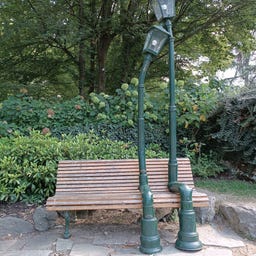
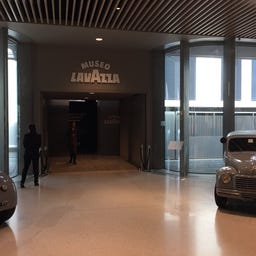
At the modern headquarters of Nuvola Lavazza in Turin, you can explore an interactive museum that brings to life the history of Italian coffee culture and the Lavazza family in the 20th century. Spanning 1200 square meters, a circular tour takes you through five themed areas across two floors, designed by the renowned design studio Ralph Appelbaum.
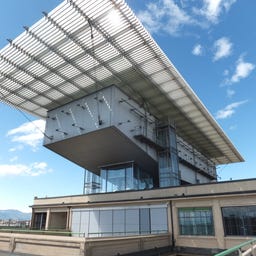
On the roof of the former Lingotto factory in Turin, an architectural highlight awaits you: the Agnelli Pinacoteca sits in a futuristic, crystal-like structure 34 meters above the historic Fiat test track. The museum building "Lo Scrigno," which opened in 2002, was designed by star architect Renzo Piano and houses the private art collection of Gianni and Marella Agnelli.
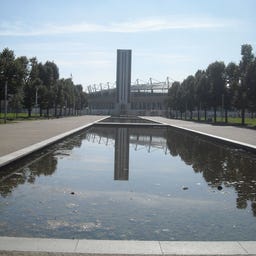
In today's Parco Cavalieri di Vittorio Veneto, you will find a green oasis of 22 hectares that served as a military parade ground until the early 19th century. The park was extensively renovated for the 2006 Winter Olympics and now impresses with a lake, a mirror fountain, and the distinctive Stadio Olimpico Grande Torino in the background.
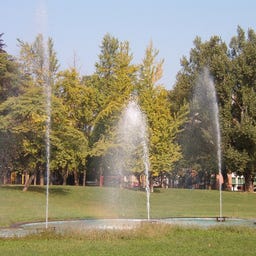
In the green heart of Turin, you'll find the expansive Parco Ruffini, a park that has served as a popular local recreational area since its opening in 1925. Named after the regime critic Francesco Ruffini, the park offers an impressive variety of free sports facilities across 13 hectares, including the Stadio Primo Nebiolo, tennis and basketball courts, and modern fitness areas.
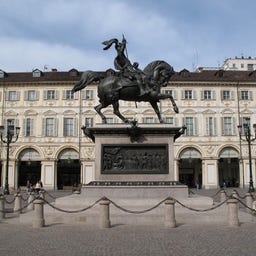
In the heart of the magnificent Piazza San Carlo in Turin stands the famous "Bronze Rider" - an impressive equestrian statue of Emanuele Filiberto di Savoia, created by the artist Carlo Marochetti. Inaugurated in 1838, the monument depicts the ruler sheathing his sword after the Battle of San Quintino and is placed on an imposing pedestal made of red granite.
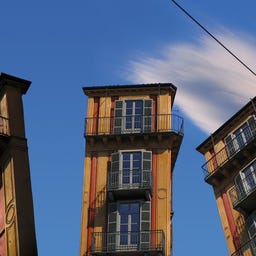
In the Vanchiglia neighborhood of Turin, you’ll find the Casa Scaccabarozzi, an architectural curiosity from the 19th century. Known colloquially as "Fetta di polenta" (slice of polenta) due to its yellow-ochre facade and extremely narrow, trapezoidal shape, this building was designed by Alessandro Antonelli between 1840 and 1881. At its narrowest point, the nine-story structure measures just 54 centimeters, yet it reaches a height of 24 meters.
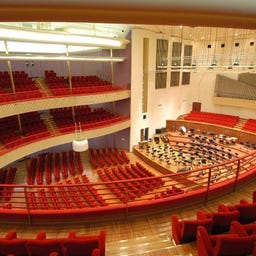
In the venerable Auditorium Rai di Torino, originally built as a riding arena in 1856, you will find one of the most significant concert halls in Italy. The hall, named after the conductor Arturo Toscanini, features a distinctive horseshoe shape and red velvet seats, accommodating 1,616 spectators.

At the Museo Accorsi-Ometto on Via Po in Turin, you will find Italy's first museum dedicated to decorative arts, housed in a historic 17th-century building. The impressive collection, which originates from the renowned antiquarian Pietro Accorsi and his heir Giulio Ometto, features over 3,000 exquisite art pieces from the 18th and 19th centuries.
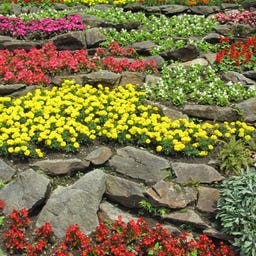
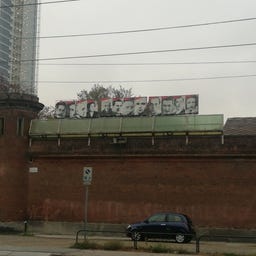
In the former prison Le Nuove, built between 1854 and 1869, you will encounter a moving piece of Italian history. The 648 cells with their characteristic "wolf's mouth openings," through which prisoners could only see the sky, testify to the strict isolation system of the 19th century.
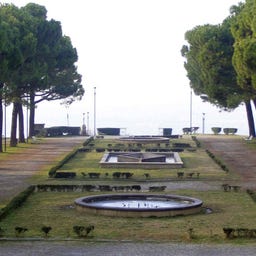
High above Turin, Parco Europa stands as a green oasis offering one of the most beautiful panoramic views of the city. Designed by Pietro Bertolotti in the 1950s, the park was opened in 1961 to celebrate the centenary of Italian unification and was named as a symbol of international unity.
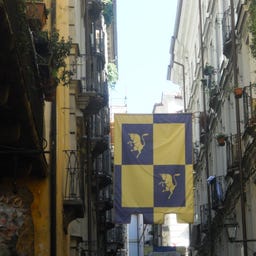
In the Quadrilatero Romano, the historic district in the west of Turin's old town, you stroll through the right-angled streets of the ancient Roman settlement Julia Augusta Taurinorum. The impressive remains of the Roman city wall and the well-preserved Porta Palatina testify to the significant history of the area, where the Roman Forum once stood.

The Piazza C.L.N. in the historic center of Turin impresses with its rationalist architecture from the 1930s and the striking twin fountains dedicated to the rivers Po and Dora Riparia. Designed by architect Marcello Piacentini, the square, which stretches behind the twin churches of Santa Cristina and San Carlo, is now named after the National Liberation Committee, having served as the Gestapo headquarters during World War II.
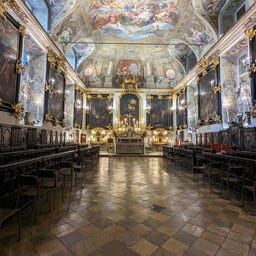
In the historic old town of Turin, you will find the Cappella dei Mercanti, a baroque chapel from the late 17th century, renowned for its exceptional acoustics.
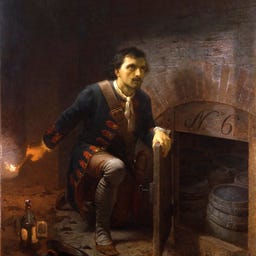
In this fascinating museum, you dive deep into the military history of Turin – quite literally, as a large part of the exhibition is underground. The extensive system of defense galleries, stretching over 21 kilometers, played a crucial role during the siege of Turin in 1706.
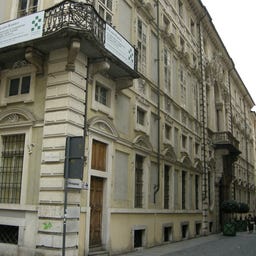
In the magnificent Palazzo Barolo from the late 17th century, you can expect a fascinating insight into the history of the nobility in Turin. The palace, built by Gian Francesco Baroncelli, impresses with its Rococo renovations by architect Benedetto Alfieri and stunning artworks, including frescoes by the Legnani family and stuccowork by Pietro Somasso.
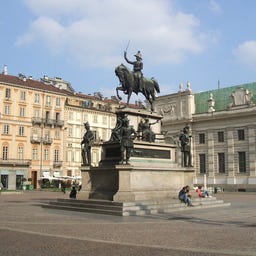
In the heart of Turin's historic center, you will find Piazza Carlo Alberto, a pedestrian square behind the magnificent Palazzo Carignano. The centerpiece of the square is the impressive equestrian statue of King Charles Albert of Sardinia, unveiled in 1861 and flanked by four allegorical female figures and soldier sculptures.
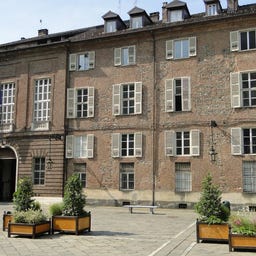
In the 16th century, the Palazzo Chiablese was built as a residence for the mistress of Duke Emanuele Filiberto of Savoy. It later became an important royal residence and is now part of the UNESCO World Heritage. The palace, where Queen Margherita of Italy was born in 1851, features magnificent 17th-century French tapestries and impressive artworks by Angelo Maria Crivelli and other notable artists. After suffering significant damage during World War II, the building was restored and is now open for free tours, while also serving as the headquarters for various cultural authorities and as an exhibition space for the Royal Museums of Turin.
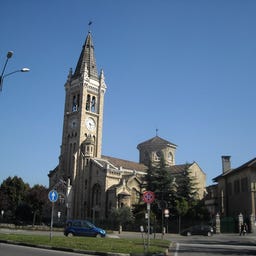
In the Turin district of Santa Rita stands the impressive Santuario monumentale di Santa Rita with its 40-meter-high bell tower. The church complex, built in the neo-Romanesque style, began construction in 1927 and was completed in 1933. It impresses with its three-nave architecture and beautifully designed stained glass windows by Giulio Valotti.
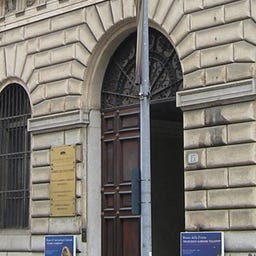
At the Museo di antropologia criminale Cesare Lombroso in Turin, you will find an extraordinary collection that explores the history of criminal anthropology in the 19th century. Founded in 1876 by Cesare Lombroso, the museum houses hundreds of human skulls and anatomical specimens, as well as an extensive collection of photographs, prison art, and historical instruments of coercion.
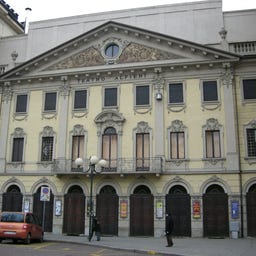
In the heart of Turin, you will find the historic Teatro Vittorio Alfieri, one of the city's most significant theaters alongside Teatro Regio and Teatro Carignano. Built in 1855 by architects Lorenzo and Barnaba Panizza, this venue with 1,500 seats has survived a tumultuous history—several fires in the 19th century and war damage during World War II did not affect its original character.
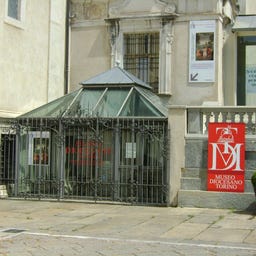
In the lower church of the Cathedral of San Giovanni Battista, you will discover the Museo diocesano, which opened in 2008 and preserves the fascinating Christian history of Turin. Archaeological excavations have uncovered the remains of three early Christian churches and Roman structures that you can visit today.

In the historic center of Turin, you'll find the Conservatorio Giuseppe Verdi, a state music academy housed in an impressive neo-baroque building from 1928. This renowned institution, founded in 1866 as a music institute and elevated to conservatory status in 1936, combines a magnificent exterior with intricate Art Nouveau elements inside. The concert hall, which was extensively restored after a fire in 1984, features a historic concert organ from 1933 and has been shining brightly again since its last renovation in 2006.

The powerful Cittadella di Torino, a pentagonal fortress from the 16th century, was built under Duke Emanuele Filiberto of Savoy and has shaped the skyline of Turin for centuries. Today, the most prominent part of this once-mighty structure is the Mastio - an impressive entrance tower that houses the National Artillery Museum.
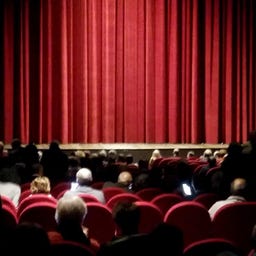
In the elegant Teatro Colosseo, one of the newest theaters in Turin located in the San Salvario district, you will find a charming hall with red velvet seats and space for over 1,500 visitors. Divided into Platea and Galleria, this theater, which was long managed by TV personality Gemma Galgani, is now an important venue for national and international concerts as well as theater performances.
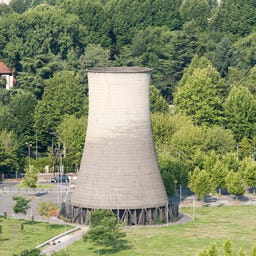
In Parco Dora, one of the largest city parks in Turin, industrial heritage and modern green spaces blend together over 456,000 square meters to create a unique recreational area. The distinctive cooling tower of the former Michelin factory and remnants of the Fiat steelworks serve as reminders of the site's industrial past, which was a production facility until the 1990s.
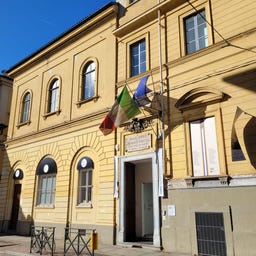
In the heart of Turin, the Camera - Centro Italiano per la Fotografia awaits you, the leading Italian center for photography, which has been showcasing national and international exhibitions since its opening in 2015. In the spaces at Via delle Rosine 18, you can not only admire works by world-renowned photographers like Ai Weiwei and Man Ray, but also participate in workshops and photography courses. The center, established in collaboration with Magnum Photos, also offers an annual masterclass in Visual Storytelling and works closely with the prestigious International Center of Photography in New York.

In the Museum of Radio and Television in Turin, you can explore the fascinating history of Italian broadcasting from 1852 to the 1990s. The collection, housed in the Rai production center, includes historical treasures like the first telegraph by Charles Wheatstone and original props from famous Rai shows such as "Rischiatutto" and "Portobello."
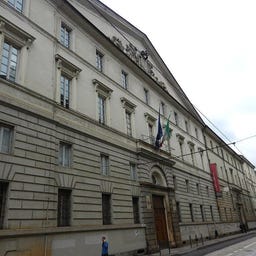
At the renowned Accademia Albertina, which traces its roots back to the early 17th century, you will find one of the most significant art academies in Italy. The institute, newly established by Carlo Alberto of Savoy in 1833, houses not only classrooms but also a valuable pinacotheca with remarkable artworks, including an altarpiece by Filippo Lippi.


At the Centro Storico Fiat in Turin, you can embark on a fascinating journey through the history of one of the most significant Italian industrial companies of the 20th century. Across two floors and 3,000 square meters, you will discover not only legendary automobiles but also airplanes, tractors, and even household appliances produced by Fiat.
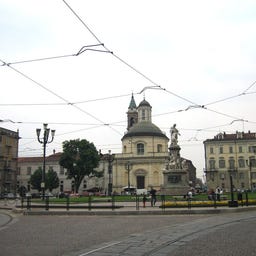
Piazza Carlo Emanuele II, also known as "Piazza Carlina" by the locals, is one of the most important squares in the historic center of Turin. It was established in 1673 as a central marketplace during the city's expansion. The square, which is 120 meters wide and square-shaped, is lined with significant historical buildings such as the Palazzo Roero di Guarene and the Church of Santa Croce, designed by Filippo Juvarra.

At the highest point of the Collina Torinese, you will find the Colle della Maddalena, which offers a breathtaking panoramic view of Turin, the surrounding hills, and the western Alps at an elevation of 715 meters. The history of this place dates back to ancient times when the Romans established a viewpoint over Augusta Taurinorum, and in the 13th century, Dominican monks dedicated the site to Mary Magdalene.
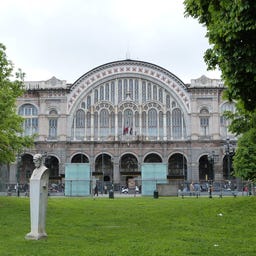
Right in front of the impressive Porta Nuova train station lies Piazza Carlo Felice, an elegant square from the 19th century featuring characteristic arcades. In the heart of the square, you’ll find the Giardino Sambuy, a green oasis with rare plants, monumental trees, and an artistic flower clock - a gift from the city of Geneva.

The Via Roma is an elegant pedestrian zone in the historic center of Turin, stretching 607 meters from Piazza Castello to Piazza Carlo Felice. This grand avenue, originally designed as "Via Nuova" by architect Ascanio Vittozzi in the late 16th century, is lined with characteristic arcades, where you can find upscale boutiques and traditional cafés.
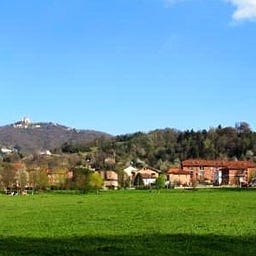
In the Meisino and Isolone di Bertolla Special Nature Reserve, one of the largest nature reserves in Turin, you can expect a unique blend of urban park and pristine nature. The 45-hectare area at the confluence of the Po and Stura di Lanzo rivers is home to Italy's only urban heron colony and provides a habitat for numerous bird species such as grey herons and great crested grebes.
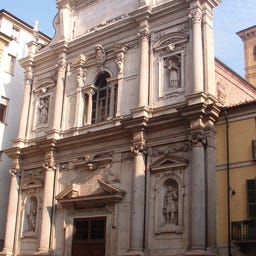
The magnificent Basilica del Corpus Domini in Turin owes its existence to a legendary event from 1453, when a host miraculously floated in the air during transport. After a modest chapel and an oratory, the current Baroque basilica was built in the early 17th century according to the plans of Ascanio Vittozzi.
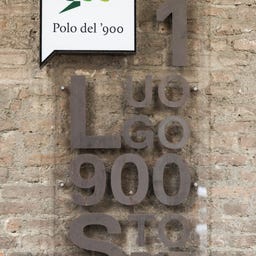
In the historic Quadrilatero Romano of Turin, you can discover the fascinating cultural center Polo del '900, housed in the palaces of San Celso and San Daniele, designed by Filippo Juvarra. Spanning over 8,000 restored square meters, it features one of the largest European collections on 20th-century history, including a library with 300,000 volumes and an extensive archive of historical documents and recordings. Established in 2016, the center brings together 24 cultural institutions under one roof and offers exhibition spaces, the Museum of the Widespread Resistance, and a variety of events for all ages. With its accessible design and digital access to the collection through the platform 9centRo, the Polo del '900 makes history available to everyone.
In the green heart of the Santa Rita district in Turin, you will find the 4.6-hectare Parco Rignon - a historic city park with a history dating back to the 17th century. At its center stands the Villa Amoretti, built in 1760 according to the plans of architect Plantery, which now serves as a municipal library.
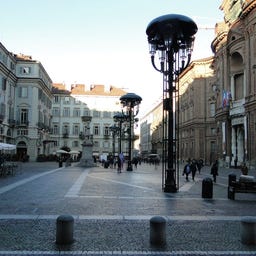
On the elegant Piazza Carignano in the heart of Turin, you can experience Italian history up close, as it was here in 1848 that the first Italian constitution was proclaimed from the balcony of the majestic Palazzo Carignano. This square, laid out in the 17th century, is lined with impressive Baroque architecture, most notably the curved façade of the Palazzo Carignano, which later housed the first parliament of united Italy.
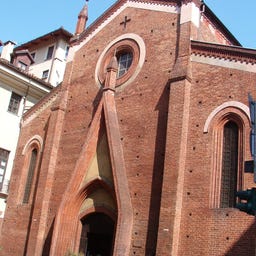
As the only surviving Gothic church from medieval Turin, the Chiesa di San Domenico has stood in the historic center of the city since the 13th century. The original structure from 1227 was later enhanced with a façade (1334) and a bell tower (1451), serving not only as a place of worship but also as a cultural hub for the city.
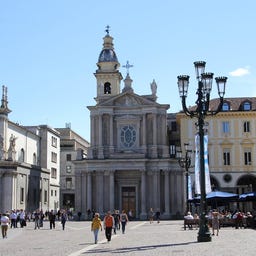
The Chiesa di San Carlo has been a defining feature of the southwest side of Piazza San Carlo in Turin since the early 17th century, creating an impressive ensemble with its twin church, Santa Cristina. The construction was commissioned in 1619 by Duke Carlo Emanuele I of Savoy and is dedicated to Saint Charles Borromeo, who visited Turin in 1578 to see the Shroud of Turin.
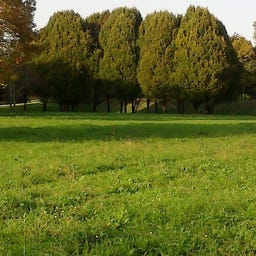
In the green northern part of Turin lies the expansive Parco Colletta, a 45-hectare recreational area with an intriguing history. Where the Savoy family once maintained their hunting grounds in the 17th century and where the historic Manifattura Tabacchi processed tobacco until 1996, a popular cycling path now runs along the Po River to Bertolla and San Mauro Torinese.
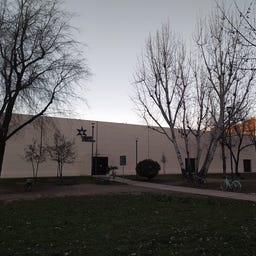
In the former industrial complex in the Turin district of Borgo San Paolo, you can find one of Italy's most important centers for contemporary art since 2002. The non-profit foundation, founded by Patrizia Sandretto Re Rebaudengo in 1995, specifically supports young artists in producing new works and has established itself as an international exhibition platform.

In a magnificent hospital building from the late 17th century, designed by Amedeo di Castellamonte, you will find one of Italy's most significant natural history museums today. The Museo regionale di scienze naturali houses impressive collections in five scientific departments - from zoology to paleontology - and features a world-renowned entomological collection with 15,000 insect specimens.
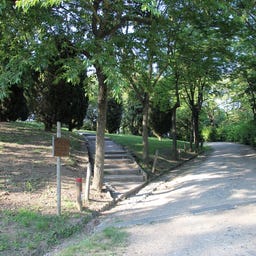
At the highest point of Turin lies the Parco della Rimembranza, a vast city park covering over 90 hectares and home to more than 21,000 trees. Since 1925, it has quietly witnessed history, commemorating 4,787 fallen soldiers from Turin in World War I with memorial plaques.
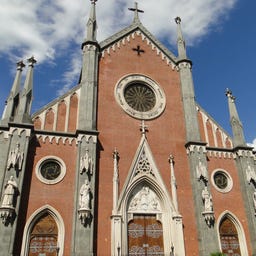
As the first neo-Gothic church in the French style in Turin, the Chiesa di Santa Giulia impresses with its striking red facade and three rose windows. Completed in 1866, the church was built in response to a cholera epidemic and was largely funded by Marchesa Giulia Colbert Falletti di Barolo, whose remains rest here today.

At the southern city limits of Turin lies Piazza Bengasi, a historic transportation hub named after the Libyan city of Benghazi. At the beginning of the 20th century, two customs houses stood here, and between 1929 and 1931, the elementary school Re Umberto I was built, which was personally inaugurated by Umberto II of Savoy.
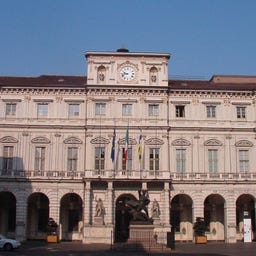
In the magnificent Palazzo Civico, the town hall of Turin, baroque architecture and centuries-old city history merge into an impressive ensemble. The building, designed by Francesco Lanfranchi, was constructed between 1659 and 1663 and was expanded by two wings in the 18th century by Benedetto Alfieri.
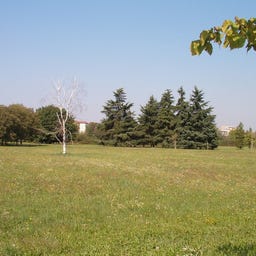
In the green southern part of Turin, the Parco Colonnetti stretches over nearly 39 hectares, where the historic Torino-Mirafiori airport was located until the 1950s. Named after the engineer Gustavo Colonnetti, the park now impresses with a geyser that shoots five fountains up to 16 meters high, as well as three ponds and more than 3,000 trees and shrubs.

The Chiesa del Santo Volto, inaugurated in 2006, is Turin's first church of the 21st century and impresses with its extraordinary architecture by Swiss star architect Mario Botta. Seven 35-meter-high towers surround the central church space, which is topped by a pyramid-shaped dome and accommodates 700 worshippers. A former industrial chimney has been creatively transformed into a postmodern bell tower, symbolizing the transformation of the former industrial district of Borgata Ceronda. Inside, flooded with light, you will find an impressive altar made of white stone and a pixelated representation of the Holy Face.
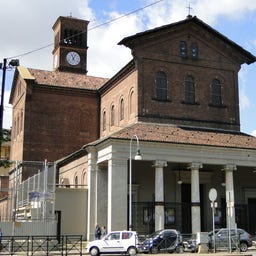
In the elegant Chiesa della Beata Vergine delle Grazie, also known as Chiesa della Crocetta, you will find a fascinating blend of neo-Byzantine, neo-Romanesque, and neo-Gothic architectural elements. The current church, completed in 1889 according to the plans of Giuseppe Ferrari d'Orsara, stands on the site of a modest chapel from the 16th century and a later Baroque building.
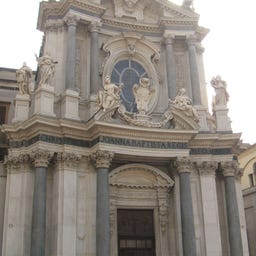
The magnificent Baroque church at Piazza San Carlo was founded in 1639 by Maria Cristina di Francia in memory of her deceased son. The striking facade, with its curved central section and oval window, was designed by Filippo Juvarra and was only completed in the early 18th century.

The Cavallerizza Reale in the heart of Turin is part of the UNESCO-protected Residences of the House of Savoy and was designed as a baroque riding hall by Benedetto Alfieri in 1740. After a significant renovation in 1840 by Ernest Melano, the historic building went through a tumultuous fate—experiencing bomb damage during World War II and three devastating fires between 2014 and 2019.
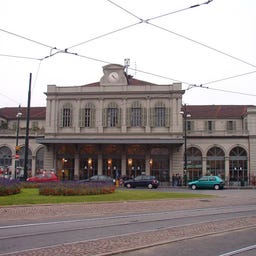
Piazza XVIII Dicembre is a historic square in the heart of Turin, named after the victims of a fascist massacre from December 1922. Originally established in the 19th century as Piazza San Martino, it served as a welcoming spot for travelers arriving at the historic Stazione di Torino Porta Susa and was built on the remnants of the Roman city wall.
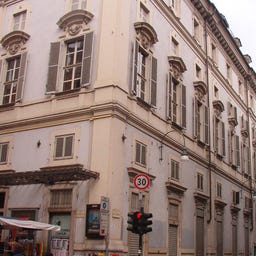
The impressive Palazzo Saluzzo Paesana was built between 1715 and 1722 by architect Gian Giacomo Plantery as a rival to the Royal Palace of Turin. Commissioned by Count Baldassarre Saluzzo di Paesana, the palace occupies an entire city block and features a magnificent entrance atrium lined with Doric and Corinthian columns.
